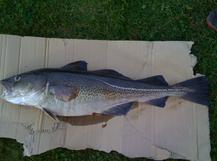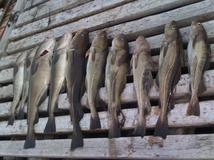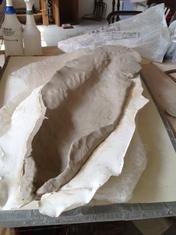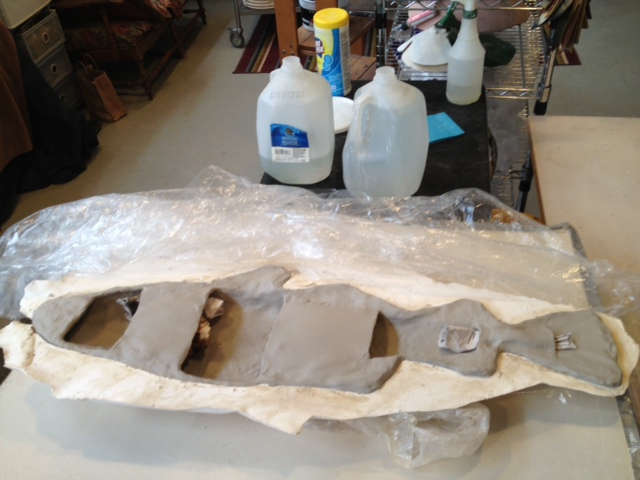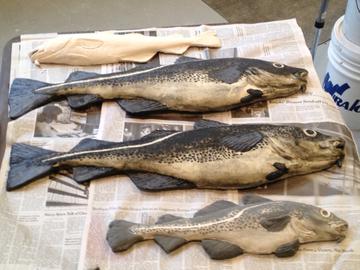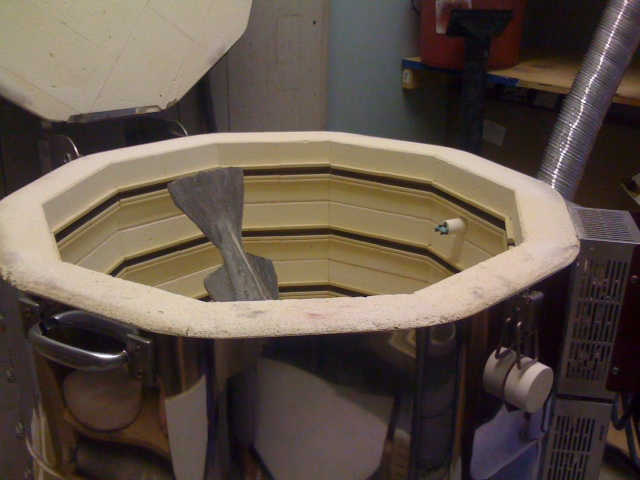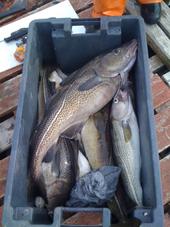When I first visited Port Rexton, NL to discover my roots back in 1997I was moved by the effects of the fish maratorium. I thought that perhaps there were no more fish and that they were becoming extinct. It occurred to me that someone should capture their image before they disappear forever. Such an important fish.
So I went out with a local fellow during the legal food fisheries season and caught a codfish. When I got to shore I dug a trough in the sand on the beach and poured potters' plaster into the trough. I then laid the fish into the plaster to make a mold of half of the fish. This was the genesis of my fish series. The fish was then removed, cleaned, and prepared to be eaten. The mold was left to dry. I then rolled out a slab of clay and pressed it into the mold. Once the clay had dried to an almost leather state and had pulled away from the mold so that it would release, I removed the clay and enhanced detail with some carving. Backing was added to enable it to be hung on the wall, it was labeled, and signed. Once this clay fish had dried completely it was fired in a bisque kiln for about 7 ours at temps that reach about 1800F. After the kiln has cooled and opened, the fish is removed and either stained or glazed. the fish is fired again at a higher temp...2100F which turns it to stone and transforms the fish to a colourful work of art and record that will last forever.
I now have a variety of fish molded, different sizes and species, all caught in Trinity Bay. I make fish in my fish factory (studio), white different from the fish factories or plants that women worked in processing fish in the small towns around Newfoundland.
It is hard to appreciate that work, done with bare hands, always wet, hour after hour handing fish, probably smelly. The women worked in the plant while the men were out catching the fish. And the salt. I cannot imagine how sore and raw the hands of these women were, handling salt fish. Very hard work. I think about those women and their work when I work.
